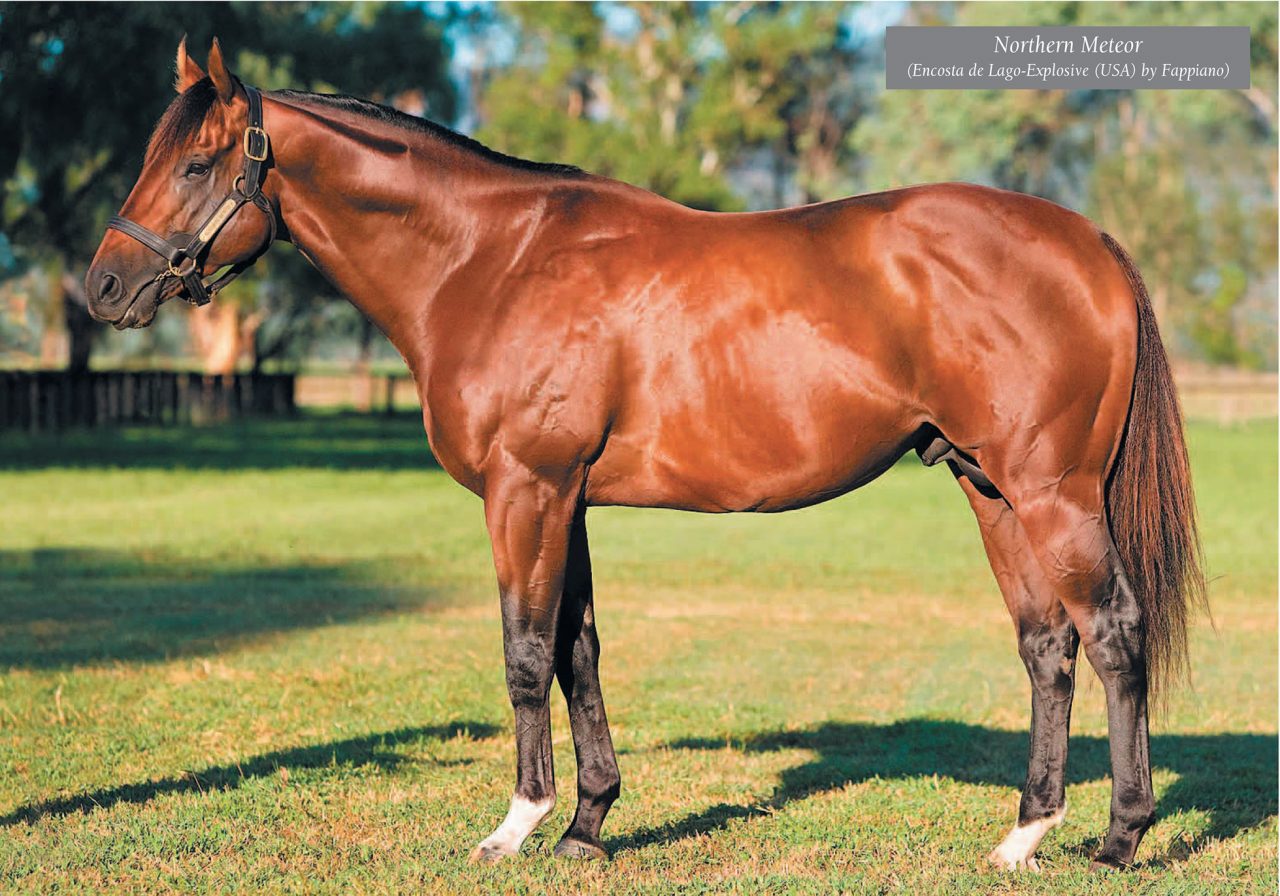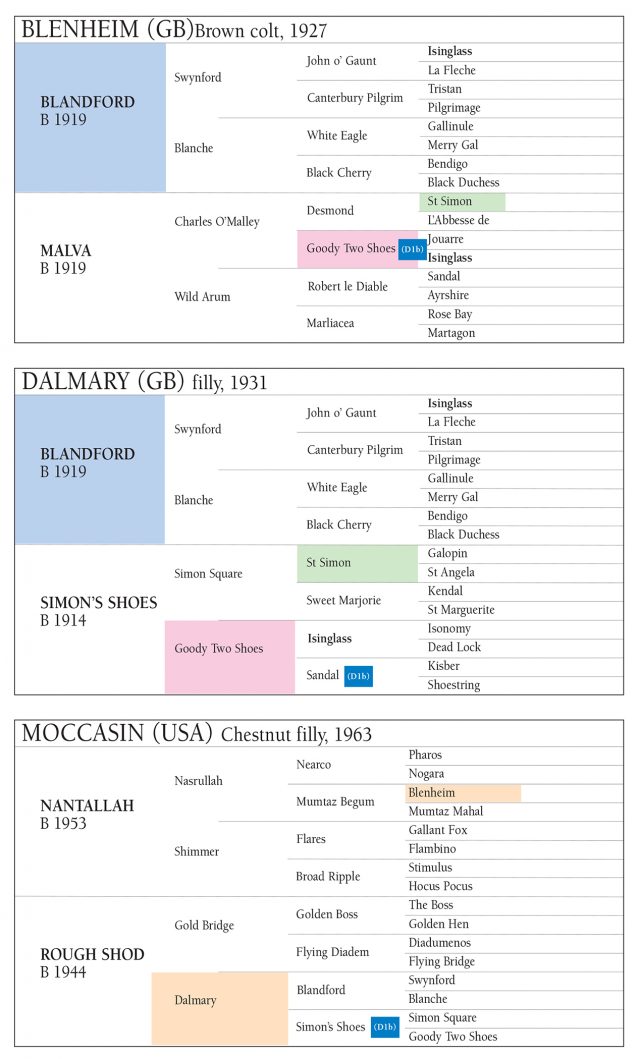[Published Bluebloods March 2020]
 ONE of the most interesting developments with regard to genetics and the thoroughbred is the establishment of female lines sorted by Mitochondrial DNA (mtDNA), mitochondria being genetic material that exists outside the nucleus of the cell, and is passed on exclusively through the female line. The mitochondria have numerous vital functions, one of which is energy production, hence the description of mitochondria as ‘the power pack of the cell,’ and they play a vital role in the aerobic component of athletic performance.
ONE of the most interesting developments with regard to genetics and the thoroughbred is the establishment of female lines sorted by Mitochondrial DNA (mtDNA), mitochondria being genetic material that exists outside the nucleus of the cell, and is passed on exclusively through the female line. The mitochondria have numerous vital functions, one of which is energy production, hence the description of mitochondria as ‘the power pack of the cell,’ and they play a vital role in the aerobic component of athletic performance.
The average overall rate of mutations in mtDNA are measured in thousands of years, which means, if we take for example, Winx, she will have the same mtDNa as the earliest known direct female ancestress, The Massey Mare, who was a foal of 1700. This might just be of academic interest, were it not for the relatively recent discovery that there are important interactions between mtDNA and nuclear DNA, or in pedigree terms the female line and the rest of the pedigree. As a result there is the potential for a stallion to combine particularly well with mares from a particular female family (mtDNA line), even though those mares may only be connected by a distant ancestor.
The investigation into the equine mtDNA genome started early in the current century, and subsequently established some clearly defined family groups (haplogroups) and sub-groups (haplotypes) have been discovered. In 2012, Achilli et al. published a paper which identified 18 major equine mtDNA haplogroups, A through R, 10 of which have been identified in the thoroughbred.
At this point modern scientific discovery intersected with some much older pedigree research. Towards the end of the 19th century the Australian pedigree researcher, Bruce Lowe, traced back the pedigrees of the winners of the English Derby, English Oaks and the St Leger Stakes, then grouped them by direct lines of tail female descent going back to the earliest ancestors found in the General Stud Book. He then proceeded to arrange these families in order of classic winners produced, thus the family with the most classic winners, that whose earliest known descendent was Tregonwell’s Natural Barb Mare, became family #1; the Burton Barb Mare and her descendents, family #2, and so on. Lowe ended up with 43 families, a number that has since been expanded, and now includes American, Colonial, and some half-bred families.
This concept of designating numbers to the various thoroughbred female families was popularized when Lowe’s work, Breeding Horses by the Figure System, was published posthumously in 1895 by his friend and editor William Allison. In addition to the historical research, Lowe added some rather fanciful theories about how to utilize the family numbers in a breeding program. Lowe’s ideas suffered a body blow in the late 1930s, when Phil Bull, best known as founder of the Timeform organization, conducted an analysis of what he called the 430 worst horses in training and revealed that the representation of the Lowe families among the worst was proportional to their representation, the #1 family the highest number, the #2 family, the second highest. This effectively ended the use of family numbers in planning breedings, but those notations have been preserved as a convenient way to categorize thoroughbred families.
 The existence of the Lowe numbering system provided a convenient framework for modern researchers to harmonise the Lowe family numbers with the Achilli mtDNA haplotypes, so we can now identify modern horses with the Achilli haplogroup and sub-group (haplotype). In the course of this endeavour, while a surprisingly high percentage of individuals belong to the haplogroup to which their pedigree suggests they belong, a great credit to the custodians of the breed given that in some cases these lines stretch back more that 300 years, there are instances where the haplotype differs from what is suggested by the stud-book record, the majority of which are very distant both in time and generations from the current population.
The existence of the Lowe numbering system provided a convenient framework for modern researchers to harmonise the Lowe family numbers with the Achilli mtDNA haplotypes, so we can now identify modern horses with the Achilli haplogroup and sub-group (haplotype). In the course of this endeavour, while a surprisingly high percentage of individuals belong to the haplogroup to which their pedigree suggests they belong, a great credit to the custodians of the breed given that in some cases these lines stretch back more that 300 years, there are instances where the haplotype differs from what is suggested by the stud-book record, the majority of which are very distant both in time and generations from the current population.
One of the most interesting of these anomalies impacts the Bruce Lowe #5 family, which we’ve mentioned in connection with Winx. Members of the #5 family should identify as Achilli haplotype B1a, and nine of the 11 sub-branches do (unless there has been a more recent error somewhere), but members of the 5g and 5h are D1b. This appears to be a deep-rooted error, which appears to stem from the 5g/5h foundation mare, Miss West (born in 1777) being wrongly attached to root of the #5 family in the 5th edition of the General Stud-Book. In the 4th edition, Miss West, is listed as being out of a Regulus Mare, bred by Mr Panton, her next three dams being by Crab, Childers and Basto. In the 5th edition despite an apparent lack of new evidence, the editor made the assumption that the Regulus Mare in question was out of Young Ebony, who also gives the Crab, Childers, Basto sequence, and is a granddaughter of Old Ebony, in turn a daughter of the #5 founder, The Massey Mare. The 5g and 5h branches descend from two different daughters of Miss West.
The D1b haplotype stems from the same root as the Shetland Pony, Icelandic Pony and Norwegian Fjoird, in the thoroughbred it is only found through the 5g/5h family (although there is some evidence that Eclipse’s great son, Pot8os (from the now defunct Bruce Lowe #38 family) might have been from this mtDNA line. Looking at the pedigrees of early thoroughbreds, it’s rare that we find more than one individual from the 5g/5h in any single pedigree, that would have considerably reduced the likelihood of the optimal nuclear/mtDNA combination for individuals from this female line to occur, especially given that the stallions who propagated early pedigrees were almost all of Eastern origin, and therefore highly unlikely to have nuclear DNA that would be optimal for the 5g/5h northern cold blood breed mtDNA.
This state of affairs began to change from the early 1930s. Blandford, an extremely talented but unsound runner was one of the leading sires of his era, getting four English Derby winners, and topping the English Leading Sire list in 1934, 1935 and 1938. Blandford did have a cross of a horse from the D1b family. His second dam, the classic producing Black Cherry, is by Bendigo, winner of the inaugural Eclipse Stakes. That horse, in turn, is by Lord Gough, a son of Gladiateur, ‘The Avenger of Waterloo’ and a French-bred who took the English Triple Crown in 1865, a member of the 5h female line. Incidentally, Gladiateur’s sire, Monarque, also sired two other major stakes winners, including Reine, successful in the Oaks and 1000 Guineas in 1872, from the D1b haplotype, significant, given that at the time mares from Db1 probably formed less than 1% of the population.
Returning to Blandford, the numbers out of mares from the D1b mtDNA line could be counted on the fingers of one hand with a couple to spare, but they included the Prix de la Salamandre and Prix du Conseil General winner Blue Skies and a Yorkshire Oaks winning filly to whom we will return in a moment.
Blue Skies himself sired the Prix Vermeille victress Ma Normandie out of a mare by Combourg, who was also a Db1 horse. Blue Skies didn’t breed on in male line, and the Blandford sire line, itself would have disappeared quite quickly hadn’t it not been for the D1b haplotype. The 1930 English Derby winner, Blenheim, Blandford’s best stallion son, was out of a mare by the foul-tempered but talented Charles O’Malley (by Desmond), a member of the D1b tribe. The branch of Blandford descending from the great French runner Brantome, saw its last outstanding stallion in Val de Loir, Champion Sire in France in 1973, 1974 and 1975, emerge from the D1b family, his fourth dam, Simon’s Shoes, being a three-quarter sister to Charles O’Malley.
Blandford’s fine son Windsor Lad, whose victories included the English Derby, St Leger, Eclipse Stakes and Coronation Stakes, had a short-lived sire line that extended furthest via his son Windsor Slipper, undefeated winner of the Irish Triple Crown, and he too was from the D1b mtDNA haplotype, his dam, Carpet Slipper, being out of Simon’s Shoes.
The best of all Blandford’s offspring as a runner was the undefeated English Triple Crown winner Bahram. Only moderately successful as a stallion in a career that saw him stand in England, the US and Argentina, Bahram is the conduit through which a branch of the Blandford sire line is still represented in the 21st century. Bahram’s son Persian Gulf, wasn’t from the D1b mtDNA line, but his grandsire Willbrook was, and he was also out of a mare inbred 3×2 to Lord Gough (who as mentioned is by one of the greatest of all D1b line horse Gladiateur). The Persian Gulf line comes down to the present day through Tamerlane and Dschingis Khan to German Horse of the Year Kongisstuhl, and thence to that horse’s son Monsun. Konigisstuhl was from the D1b maternal line and carried the previously mentioned Blandford/Db1 horse Blue Skies. Monsun was also inbred 4×4 to Kongisstuhl’s third dam Kaiserkrone and her brother, Kaiseradler.
Considering that the D1b haplotype represents currently only around 2% of the breed, and was less than that until relatively recently, it’s remarkable that four male lines of Blandford have been extended through horses from that branch. We also mentioned that there was a notable mare by Blandford from the D1b line. So, who is the mystery mare? None other than Dalmary, who was among the best of her sire’s daughters with a win in the Yorkshire Oaks. Dalmary is out of Simon’s Shoes, so owned a very similar background to Blenheim, both by Blandford, with Blenheim being out of a mare by Simon’s Shoes’ three-quarter brother Charles O’Malley.
Charles O’Malley and Dalmary came together at 4×2 in the mating between Nantallah and Dalmary’s daughter Rough Shod II. The results of that union included Moccasin, who earned a US Horse of the Year title as a two year-old filly; Champion Two Year-Old Colt Ridan; Lt. Stevens, a stakes winner who is broodmare sire of Lear Fan and Alysheba; and Thong, who produced four major stakes winners, and who is second dam of Nureyev, and third dam of Sadler’s Wells and Fairy King.
A remarkable number of stallions from the D1b haplotype have enjoyed success when crossed back over that that line, examples including Reform (sire of French Derby Roi Lear, probably his best runner); Thatch (sire of Champion Sprinter Thatching, his best runner); Sadler’s Wells (sire of Gr.1 winners Islington, Greek Dance, Correggio, Fatherland, Saddler’s Rock); Fairy King (one of his best runners, Victory Note, from D1b line mare who doesn’t connect with Fairy King until the 1700s); Blame (Gr.1 winner Fault, who may be his best runner); Auchipenko (himself having Nureyev and his three-quarter sister Bound 3×1, has sired Gr.1 winners Forty One, Madame Chiang, Glorious Forever and Time Warp, from D1b line mares) and Nureyev (sire of Atticus, Gr.1 winner of more than $1m). Fairy King’s son Encosta de Lago, sired Northern Meteor out of a D1b mare. Most recently, we have the Prix de l’Arc de Triomphe victor Waldgeist, who is by Galileo, a son of Sadler’s Wells (D1b), out of a mare by Monsun, a son of Konigsstuhl (D1b), and is himself from the D1b maternal haplotype.
There is a good chance that the D1b haplotype would have been operating at a much lower level had not Blandford combined so well with the family, and had not the two relatives by Blandford, Blenheim and Dalmary, not recombined. The most likely explanation is that even though it received very little reinforcement for the better part of 150 years, the D1b haplotype was able to maintain a presence through the metabolic efficiency that would be expected from a haplotype that thrived in a cold climate.
Whether from Gladiateur, or from another source, Blandford, in the way that some modern humans have neaderthal dna, must have carried the nuclear dna that was optimal for the D1b maternal line, thus when Blandford recombined with it there was something of a genetic explosion. It’s probable that some kind unique genetic affinity also explains why, even when not crossed back over D1b mares, genetic relatives from the family, such as Sadler’s Wells, Fairy King, Nureyev, Perugino and Yeats, have done so well in combination.



